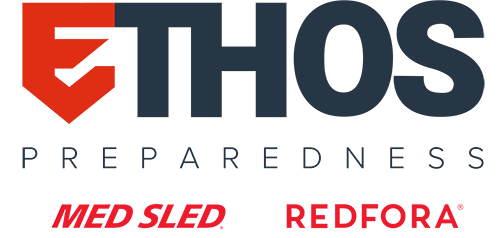After 18 months focused on the global pandemic, more recent events like The Great ShakeOut last week and the Bomb Cyclone this weekend were reminders that there are many incidents to be prepared for, particularly if you live on the West Coast.
In tandem with the world’s largest earthquake drill, new research was released on the potential effect of a magnitude 7.0 earthquake along the Bay Area’s Hayward Fault. Studies found a quake of this size would allow Alameda County to provide just 7% of the demand for voice and data service, potentially for weeks.
Some context? The communications service failure in New York City after the 9/11 attacks was 97%. That comparison is startling enough, especially when considering our society’s reliance on cell service in 2021.
As newsworthy as this story is (garnering dozens of local and national stories), it’s nothing we didn’t already know. This report is third in a series of similar predictions that drive home the importance of everything from modern earthquake engineering to the responsibility of individuals in high-risk areas for preparing emergency kits and plans because of the domino effect that will start after a quake.
Steve Eberlein, Earthquake Preparedness Expert and Corporate Resilience & Engagement Manager here at Ethos Preparedness had this to say about this announcement:
“One of the consistent themes we should expect going forward when it comes to disasters is not just the force of the event, but the impact of utility and service disruption after. Our society is on utility/service life support, and those very services and utilities rely on one another to function.
When any one goes down for too long (cell phones, electricity, gas, supplies) that system falls apart and we become fish out of water. Preparedness is about minimizing injuries caused by an event and having a safety net that is not dependent on utilities and services for its aftermath.”
With that in mind, individuals can take some action items:
- Having a tool like a NOAA radio is critical across the west coast. You will be able to tune into emergency alerts and local guidance even without reliable cell service.
- Sign up for local SMS emergency alerts. Because of the way SMS technology works, it will continue to attempt to ping your phone until it goes through, making it one of the more reliable forms of cell communication.
- Take the reminder to double down on your emergency kit and planning. FEMA and Ready.gov recommend 72 hours of supplies, but with this information you may decide to opt into a full week or more of supplies to handle the subsequent cleanup efforts.
What should emergency managers and resilience professionals do with this information? Consider looking into innovative Earthquake Early Warning Technology and employee engagement as a part of your continuity planning.
- Employee Engagement: The best planning will fall flat if your workforce isn’t aware of them or engaged in practicing. Communicating regularly with your company is key. Check out our Employee Engagement page for more options from the Ethos team.
- Earthquake Early Warning Technology: ShakeAlert technology can reduce injuries by 50% in the event of an earthquake, and can trigger automated functions that can prevent the worst when the shaking strikes. Early Warning Labs recently announced their partnership with LAX Airport and the Los Angeles Metro, giving their employees and systems valuable seconds notice before the ground starts shaking.
Interested in learning more? Join us on Thursday October 27th for a free webinar co-hosted by Josh Bashioum from Early Warning Labs on how EEW tech is changing the preparedness game across the west coast.
Registration Link

